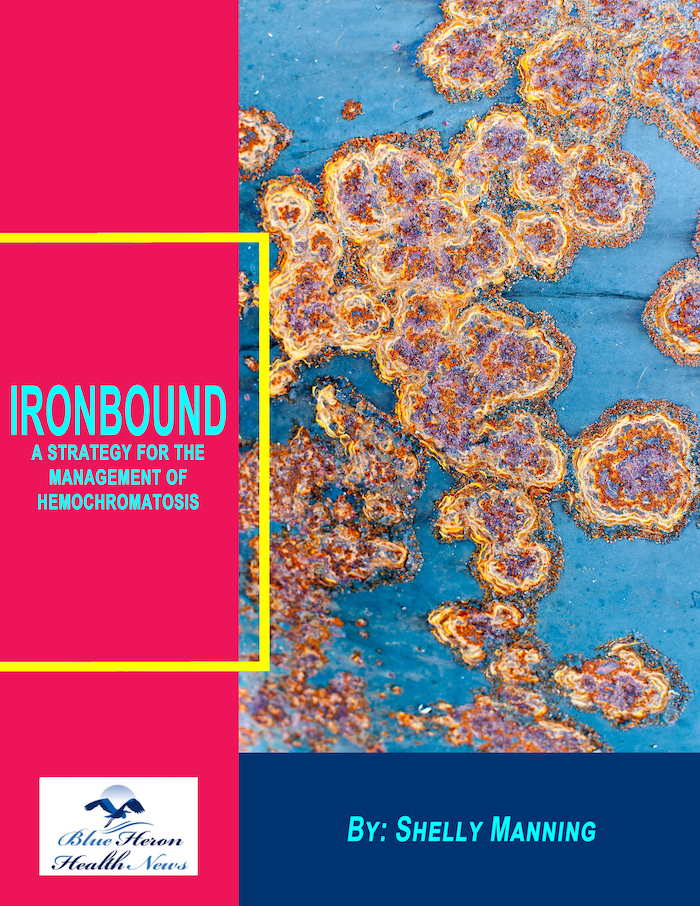
Ironbound™ A Strategy For The Management Of Hemochromatosis By Shelly Manning The 5 superfoods explained by Shelly Manning in this eBook play an important role in reducing the levels of HCT. The absorption of the excessive amount of iron by the genes of HCT can be blocked by these superfoods. In this way, the information provided in this eBook can help in resolving the problem of excess iron in your body naturally without any risk of side effects.
What is the impact of hemochromatosis on the pancreas?
Impact of Hemochromatosis on the Pancreas
Hemochromatosis is a genetic disorder characterized by excessive iron accumulation in various organs, including the pancreas. This iron overload can lead to significant damage to pancreatic tissues, impairing its function and leading to serious health complications. Here is a detailed overview of the impact of hemochromatosis on the pancreas, including pathophysiology, clinical manifestations, diagnosis, and management.
Pathophysiology of Pancreatic Damage in Hemochromatosis
1. Iron Overload in the Pancreas
- Iron Accumulation: In hereditary hemochromatosis, genetic mutations (most commonly in the HFE gene) lead to reduced hepcidin levels, resulting in increased intestinal iron absorption. Excess iron is deposited in various organs, including the pancreas.
- Oxidative Stress: Excess iron generates reactive oxygen species (ROS) through the Fenton reaction, causing oxidative damage to pancreatic cells.
- Inflammation: Iron-induced oxidative stress triggers an inflammatory response, leading to further tissue damage and fibrosis.
2. Impairment of Pancreatic Function
- Exocrine Function: The exocrine pancreas produces digestive enzymes that are essential for breaking down food in the small intestine.
- Endocrine Function: The endocrine pancreas, particularly the islets of Langerhans, produces hormones such as insulin and glucagon, which regulate blood glucose levels.
Clinical Manifestations
1. Diabetes Mellitus (Bronze Diabetes)
- Mechanism: Iron deposition in the pancreatic islets damages insulin-producing beta cells, leading to insulin deficiency and impaired glucose metabolism.
- Symptoms: Symptoms of diabetes mellitus include increased thirst (polydipsia), frequent urination (polyuria), unexplained weight loss, fatigue, blurred vision, and slow-healing sores or infections.
- Bronze Diabetes: The term “bronze diabetes” is often used to describe diabetes mellitus in hemochromatosis patients, who may also exhibit hyperpigmentation of the skin due to iron deposition.
2. Exocrine Pancreatic Insufficiency
- Mechanism: Iron overload can damage the exocrine pancreas, leading to a reduction in the production of digestive enzymes.
- Symptoms: Symptoms of exocrine pancreatic insufficiency include weight loss, steatorrhea (fatty stools), malnutrition, bloating, and abdominal discomfort.
Diagnosis
1. Clinical Evaluation
- History and Physical Examination: Assess symptoms such as increased thirst, frequent urination, unexplained weight loss, fatigue, and gastrointestinal symptoms like steatorrhea and abdominal discomfort.
2. Laboratory Tests
- Blood Glucose Levels: Elevated fasting blood glucose levels and HbA1c indicate diabetes mellitus.
- Serum Ferritin and Transferrin Saturation: Elevated levels indicate increased iron stores and overload.
- Liver Function Tests: To assess liver involvement, as liver disease can coexist with pancreatic complications in hemochromatosis.
3. Genetic Testing
- HFE Gene Testing: Identifies mutations such as C282Y and H63D associated with hereditary hemochromatosis.
4. Imaging Studies
- MRI: Magnetic resonance imaging can quantify iron concentration in the pancreas and assess the extent of iron overload.
- Ultrasound: Detects structural abnormalities in the pancreas and other organs.
5. Pancreatic Function Tests
- Fecal Elastase Test: Measures the level of elastase in stool to assess exocrine pancreatic function. Low levels indicate exocrine pancreatic insufficiency.
- Secretin Stimulation Test: Measures the ability of the pancreas to secrete digestive enzymes in response to secretin.
Management
1. Phlebotomy
- Mechanism: Regular blood removal to reduce iron levels. Each session removes about 500 ml of blood, containing approximately 250 mg of iron.
- Frequency: Initially weekly or biweekly until iron levels normalize, followed by maintenance phlebotomies every few months.
- Effectiveness: Reduces iron overload, alleviates symptoms, and can improve pancreatic function.
2. Iron Chelation Therapy
- Use: For patients who cannot tolerate phlebotomy or have severe iron overload.
- Medications: Deferoxamine, deferasirox, and deferiprone, which bind to excess iron and facilitate its excretion.
- Effectiveness: Helps reduce iron levels and prevent further pancreatic damage.
3. Diabetes Management
- Medications: Insulin therapy is often required due to the impaired production of insulin by the pancreas. Oral hypoglycemic agents may also be used.
- Diet and Exercise: A balanced diet and regular physical activity are crucial for managing blood glucose levels and overall health.
4. Management of Exocrine Pancreatic Insufficiency
- Pancreatic Enzyme Replacement Therapy (PERT): Supplements containing digestive enzymes (e.g., pancrelipase) help improve digestion and nutrient absorption.
- Dietary Adjustments: A diet low in fat and high in easily digestible carbohydrates and proteins can help manage symptoms.
5. Lifestyle Modifications
- Avoid Iron-Rich Foods and Supplements: To prevent further iron accumulation.
- Limit Alcohol Intake: To reduce the risk of liver damage and further pancreatic stress.
- Avoid Raw Shellfish: To reduce the risk of infections like Vibrio vulnificus, which can be severe in individuals with hemochromatosis.
6. Regular Monitoring and Follow-Up
- Monitoring Iron Levels: Periodic assessment of serum ferritin, transferrin saturation, and liver function tests.
- Screening for Complications: Regular screening for diabetes-related complications (e.g., retinopathy, nephropathy) and monitoring pancreatic function.
Conclusion
Hemochromatosis can significantly impact the pancreas, leading to diabetes mellitus (bronze diabetes) and exocrine pancreatic insufficiency due to iron overload. These complications arise from chronic iron-induced oxidative stress, inflammation, and tissue damage. Early diagnosis and effective management, including phlebotomy, iron chelation therapy, diabetes management, and pancreatic enzyme replacement therapy, are crucial to prevent or mitigate pancreatic damage. Regular monitoring and lifestyle modifications are essential for managing the condition and improving patient outcomes.
Ironbound™ A Strategy For The Management Of Hemochromatosis By Shelly Manning The 5 superfoods explained by Shelly Manning in this eBook play an important role in reducing the levels of HCT. The absorption of the excessive amount of iron by the genes of HCT can be blocked by these superfoods. In this way, the information provided in this eBook can help in resolving the problem of excess iron in your body naturally without any risk of side effects.
